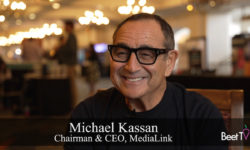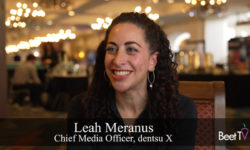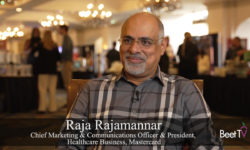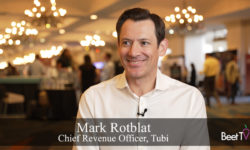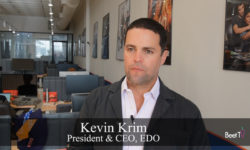In the last couple of years, we have seen an intense upswing in matters of diversity across marketing.
But one man in a pivotal position on that topic says that some marketers’ interest has waned.
In this video interview with Beet.TV at ANA Masters Of Marketing, Louis Carr, long-time president of media sales at BET Networks, explains why diverse media can still move the needle – and why the big networks are playing catch-up.
Investment trends
“We saw a big push in 2020 right after the death of George Floyd and the social uprising in this country,” Carr says. “Since then, it’s sort of come to join back down to normal.
“The people who were already invested and believe that diverse audiences would make a difference in their overall business, they continue to spend at strong levels.
“Those who just started in 2020 and it was a reaction to George Floyd and the social uprising in this country, they’ve gone back to some of their old habits.”
Serving communities
Carr is a veteran BET exec who has been with the group since 1986, runs his own foundation geared toward improving internship diversity and holds several other non-profit roles.
One output of the stronger interest followed George Floyd’s death has been a strong role for people from a diverse range of backgrounds in ad creative, for example.
But there is another way in which “diversity” can help brands – distinct audience communities can help marketers target specific groups, adding up to extra reach, or the right reach for particular products and services.
BET (Black Entertainment Network) targets African-American audiences.
We have seen TelevisaUnivision launch a Hispanic-focused “identity graph”, offering ad buyers a way to reach an audience it says represents 20% of the population.
Only The Hispanic Graph Can Grow Your Business: TelevisaUnivision’s Donna Speciale
Count everyone
What TelevisaUnivision, and BET’s Carr, believe is that broad-based networks, and the methods used to count their audiences, are likely under-counting minority audiences in the footprint.
“The big guys are still far behind when it comes to diverse audiences,” Carr says.
“They’re far behind when it comes to all audiences. So, when it comes to diverse audience, they have a long way to go to be able to capture our audience in the way that it should.
“They’re going to have to really put some dollars and some resources behind trying to create technology in order to get more accurate numbers when it comes to Blacks, Hispanics, and Asians in our space.”
You’re watching “Assessing TV Performance in a Changed Landscape,” a Beet.TV Leadership Series produced at the 2022 ANA Masters of Marketing, presented by EDO Inc. For more videos from this series, please visit this page.






